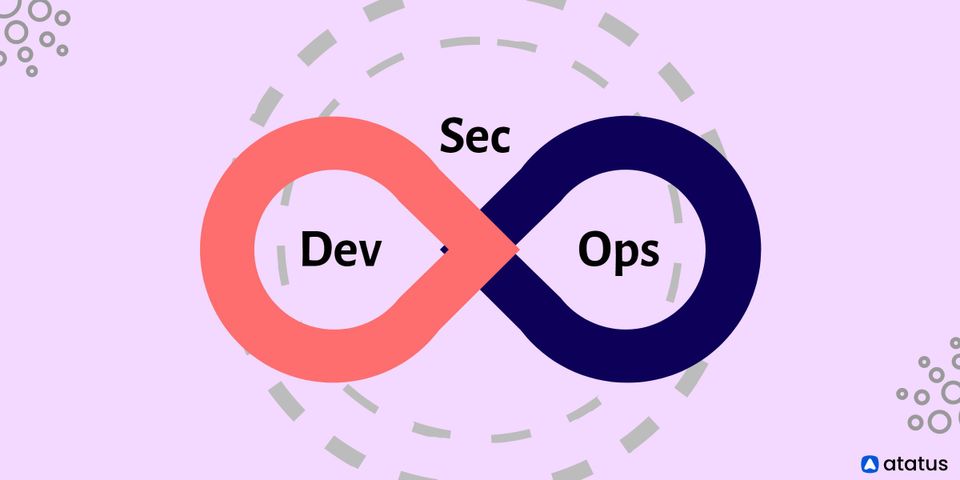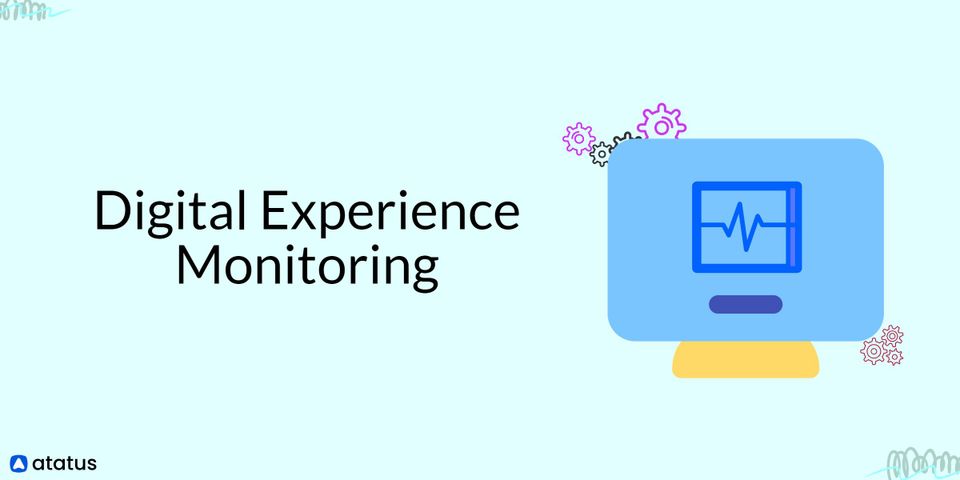Security testing and protection are seamlessly integrated throughout the software development and deployment lifecycle with DevSecOps. DevSecOps is as much about the culture and shared accountability as it is about technology and strategies, just like DevOps. DevSecOps aims to produce better software faster while also detecting and responding to software flaws in production.
We will go over the following:
- What is DevSecOps?
- Detailed Explanation for DevSecOps
- Benefits of DevSecOps
- Challenges in DevSecOps
- Why DevSecOps is Important?
What is DevSecOps?
From original design to integration, testing, deployment, and software delivery, DevSecOps automates the integration of security at every stage of the software development lifecycle. DevSecOps is a logical and necessary evolution in the way development teams think about security.
A separate security team "tacked-on" security to software towards the end of the development cycle and was tested by a separate quality assurance (QA) team in the past. When software upgrades were only distributed once or twice a year, this was manageable.
The conventional "tacked-on" approach to security developed an unacceptable bottleneck when software engineers adopted Agile and DevOps approaches, aiming to cut software development cycles to weeks or even days. DevSecOps seamlessly integrates application and infrastructure security into DevOps and Agile processes and tools.
DevSecOps makes the application and infrastructure security a shared responsibility of development, security, and IT operations teams. It automates the delivery of secure software without slowing down the software development cycle.
Detailed Explanation for DevSecOps
DevSecOps is a tactical trifecta that brings together three distinct disciplines: development, security, and operations. In both pre-production and production environments, the goal is to easily integrate security into your continuous integration and continuous delivery (CI/CD) pipeline. Let's take a look at each discipline and how it contributes to the faster delivery of better, more secure software.
Development
New software applications are created and iterated by development teams. This includes the following:
- Applications created from the ground up for a single, defined purpose
- API-driven connections that allow legacy systems and new services to talk to each other
- Applications that take advantage of open-source code to speed up development
Agile models are used in modern development processes, which prioritize continuous improvement over sequential, waterfall-model steps. New applications or features may introduce operational challenges or security vulnerabilities that are costly and time-consuming to address if developers work in isolation without considering operations and security.
Operations
The processes of managing software functionality throughout its delivery and usage life cycle are referred to as operations. These processes include monitoring system performance, correcting defects, testing after updates and modifications, and adjusting the software release system.
In recent years, DevOps has gained traction as a way of combining important operational concepts with development cycles, realizing that the two processes must coexist. Siloed post-development activities can make it easier to spot and fix potential issues, but this approach forces developers to go back and fix software bugs before moving on to a new project. Instead of a simplified software approach, this leads to a complicated route map.
Organizations can minimize deployment time and improve overall efficiency by running operations in tandem with software development processes.
Security
All of the tools and techniques required to design and construct software that is resistant to attack, as well as to identify and respond to defects as rapidly as feasible, are referred to as security.
Traditionally, application security has been addressed after development and by a distinct team of individuals – one that is not part of either the development or operations teams. The development process and reaction time were hampered as a result of this compartmentalized approach.
In addition, security tools have always been compartmentalized. Each application security test focused solely on that application, and in many cases, primarily on its source code. This made it difficult for anyone to have a comprehensive perspective of security vulnerabilities across the organization, or to comprehend any software risks in the production environment.
Benefits of DevSecOps
Including DevSecOps in your project has various advantages. A few benefits are mentioned below:
- Fast Delivery
When security is built into the software delivery pipeline, it speeds up the process. Before deployment, bugs are found and repaired, allowing developers to focus on delivering features. - Cost Savings
Identifying vulnerabilities and defects before launching reduces risk and operational costs exponentially. - Improve Security Posture
From the beginning of the design process, security is a priority. From creating, deploying, and securing production workloads, a shared responsibility architecture ensures security is firmly integrated. - Repeatable and Adaptive Process
Repeatable and adaptive processes are ideal for DevSecOps. As the environment develops and adapts to new requirements, this guarantees that security is implemented consistently across the board. Automation, configuration management, orchestration, containers, immutable infrastructure, and even serverless compute environments are all features of a mature DevSecOps implementation. - Increasing the Value of DevOps
The incorporation of security principles into DevOps creates a culture of shared accountability, which improves overall security posture. - Accelerated Security Vulnerability Patching
One of the most important advantages of DevSecOps is how rapidly it handles newly discovered security vulnerabilities. The capacity to find and repair common vulnerabilities and exposures (CVE) is harmed as DevSecOps integrates vulnerability screening and patching into the release cycle. This reduces the amount of time a threat actor has to exploit flaws in public-facing production systems. - Increasing the Likelihood of Overall Business Success
Increased revenue growth and expanded business offerings are enabled by increased faith in the security of developed software and the adoption of new technologies. - Automation Compatible with Modern Development
The project and organizational goals have a big impact on security check automation. Automated testing can verify that incorporated software dependencies are patched to the appropriate levels and that security unit testing succeeds. It can also use static and dynamic analysis to test and secure code before releasing it to production.
Challenges in DevSecOps
There are some challenges in implementing DevSecOps.
- People and Culture
You may need to retrain members of your DevOps teams in order for them to grasp security best practices and how to use your new security tooling. In terms of culture, your teams must actually believe that they are equally accountable for the security of the software they design and deploy as they are for its features, functions, and usability. - Finding the Right Security Tooling
The more automated and integrated your DevSecOps tools are with your CI/CD pipeline, the less training and culture shift you'll need to undertake. Choosing a more automated version of the security tools you've been using for years isn't always the best solution. Because your development environment has most certainly changed significantly in recent years.
Open-source software makes up 70% of the average modern software application. Unfortunately, traditional security tools were not built to effectively find vulnerabilities in open-source software.
Why DevSecOps is Important?
The IT infrastructure landscape has altered substantially in the last decade. Organizations wanting to prosper and grow through the use of innovative applications and services have reaped significant benefits from the change to flexible cloud computing platforms, shared storage and data, and dynamic applications.
While DevOps systems have come a long way in terms of speed, scale, and functionality, security and compliance are still areas where they may be improved. To bring development, operations, and security together in one place, DevSecOps was introduced into the software development lifecycle.
Hackers are constantly on the lookout for new ways to spread malware and other bugs. Consider what would happen if they were able to inject malware into an application during the development process, and the malware was not identified until the software had been distributed to thousands of users.

In today's world, where bad news spreads in seconds, the impact on both the customer system and the company's reputation would be immense.
For any organization involved in application development and delivery, putting security on par with development and operations is a must. Every developer and network administrator considers security while creating and deploying applications when DevSecOps and DevOps are merged.
Conclusion
DevSecOps refers to the seamless integration of security testing and protection throughout the software development and deployment lifecycle. Your teams can develop better, higher-performing, more secure software faster and with less effort using real-time security intelligence across pre-production and production environments, as well as AI-driven recommendations and automation that can aid in the management of the DevOps workflow at every stage.
Monitor Your Entire Application with Atatus
Atatus provides a set of performance measurement tools to monitor and improve the performance of your frontend, backends, logs and infrastructure applications in real-time. Our platform can capture millions of performance data points from your applications, allowing you to quickly resolve issues and ensure digital customer experiences.

Atatus can be beneficial to your business, which provides a comprehensive view of your application, including how it works, where performance bottlenecks exist, which users are most impacted, and which errors break your code for your frontend, backend, and infrastructure.





